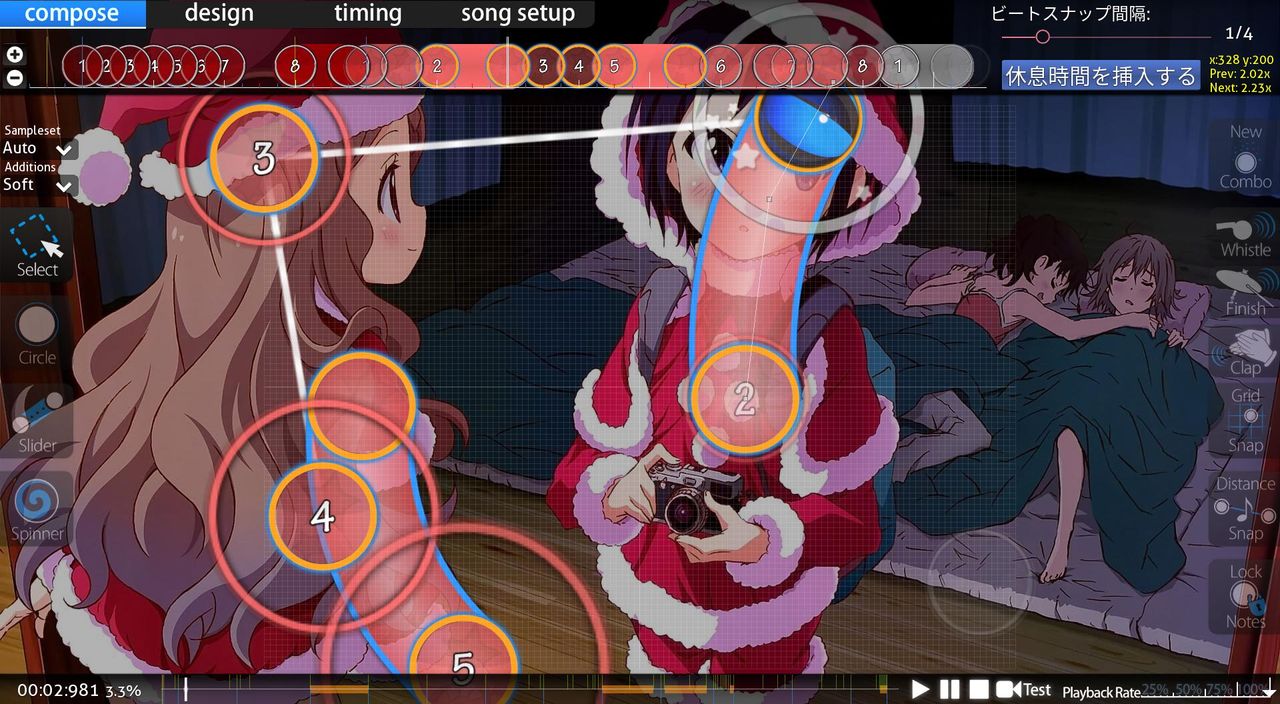Style
I like maps that show personality, primarily maps that do something unexpected and challenge the player in unusual ways while respecting the song.
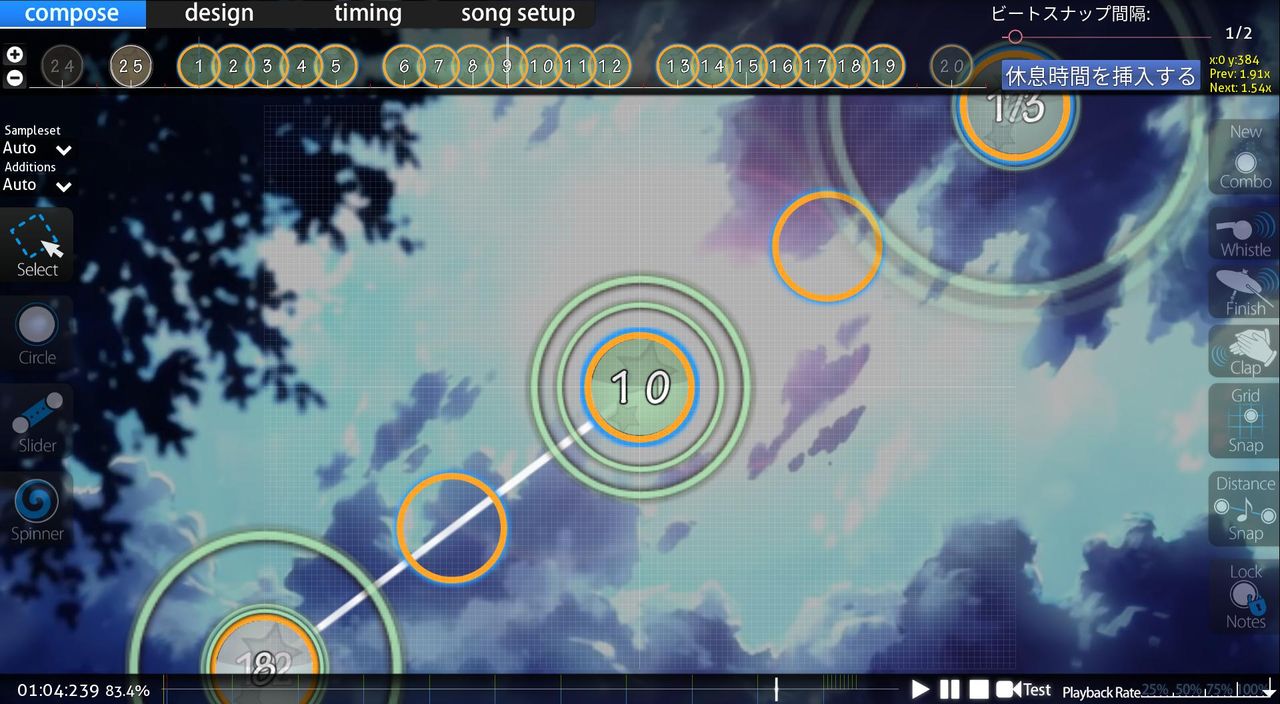
I focus heavily on introducing changes in my maps based on the lyrics of a song. Knowing the language used (e.g. French, Japanese) is important since translations are not the same song.
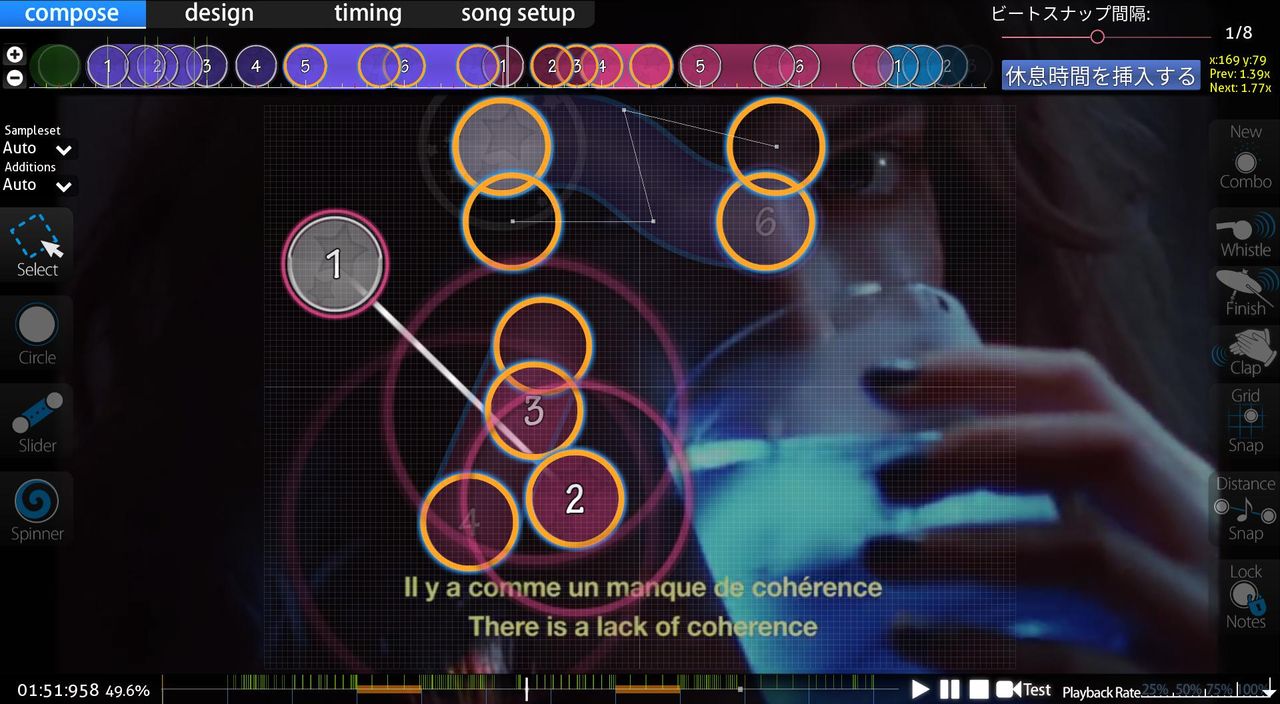
I tend to apply a central concept across all difficulties of a set. I often use specific parts of the playing field based on the song itself, and between all difficulties of the set.
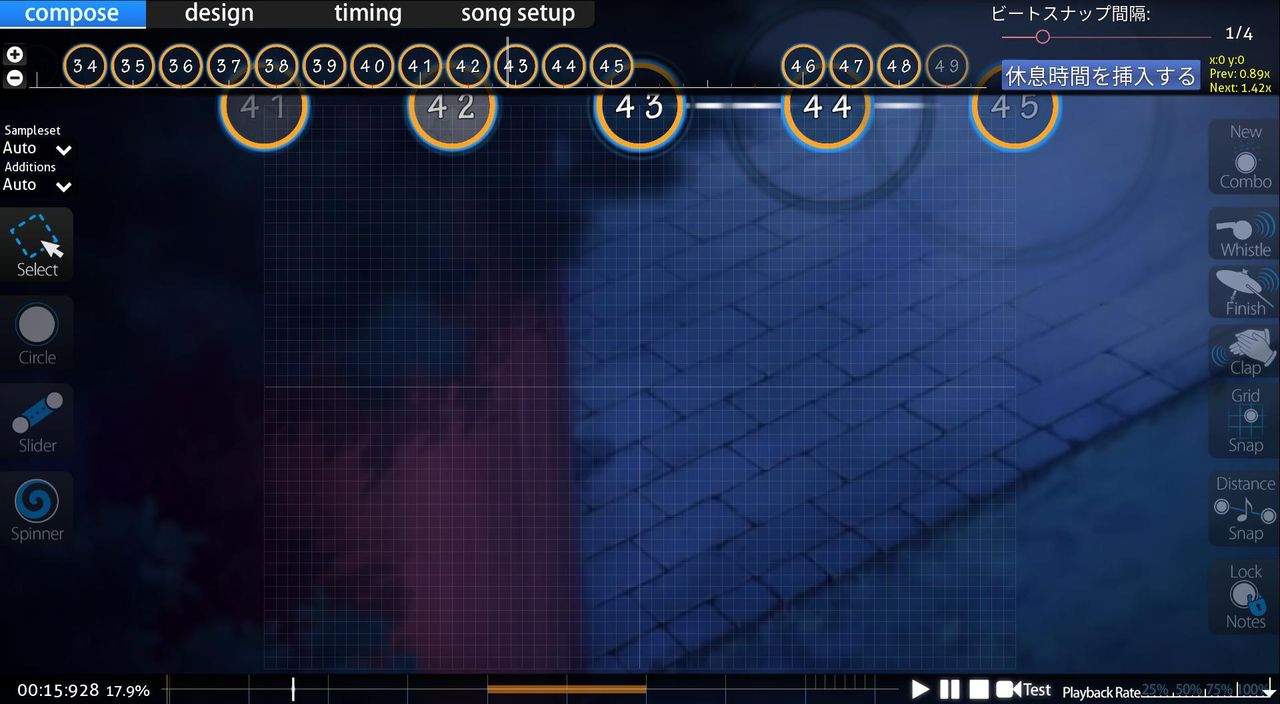
I intentionally change combo length and ignore NC on downbeats to emphasize different parts of the song.
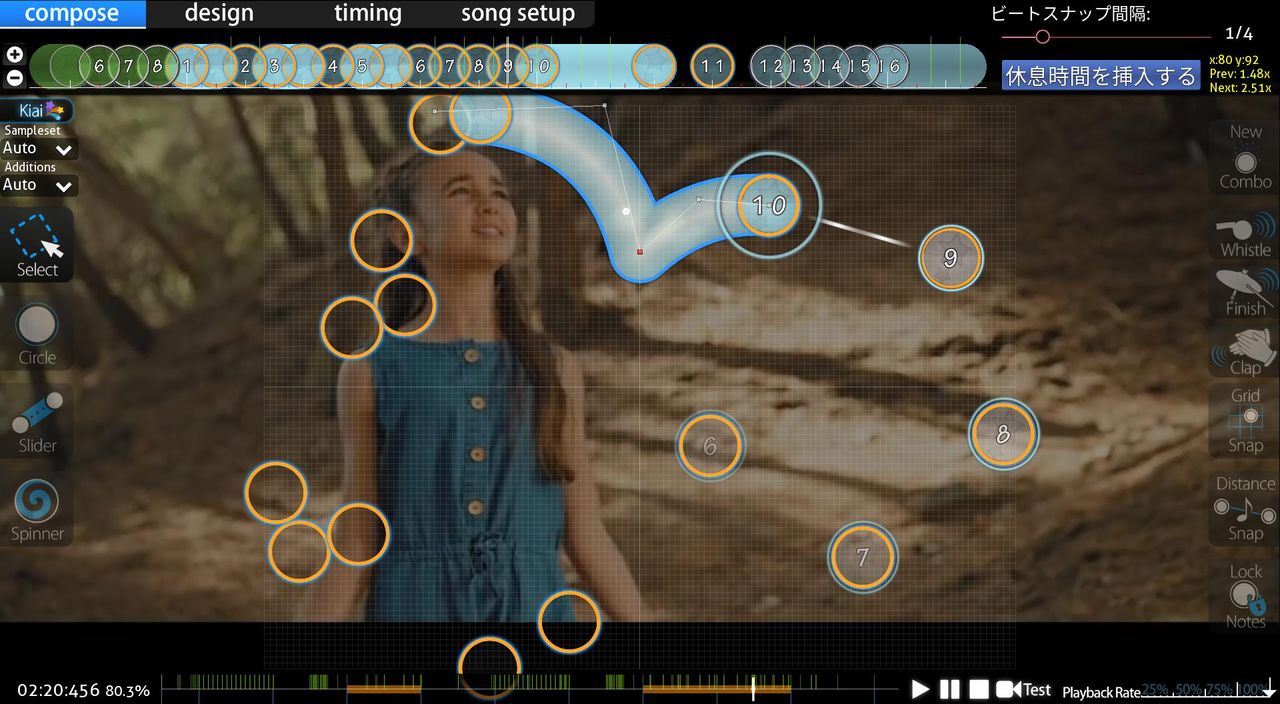
My mapping can be described as traditional mapping with modern elements. I use grid size 4 for more precise coordinates and a rigid feel. I focus heavily on the weight of objects, which was more relevant in older maps with lower AR.
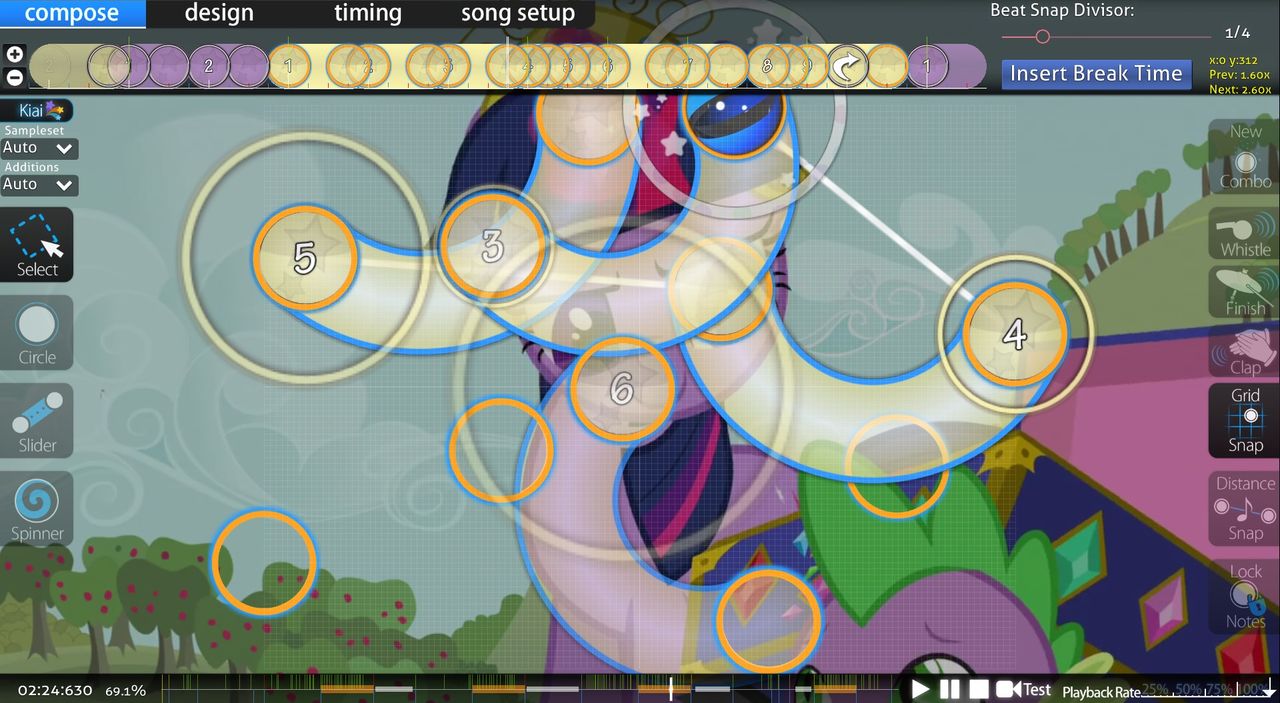
Whereas other mappers base their mapping structures on the surrounding objects, I focus on choosing structures that support the song itself.
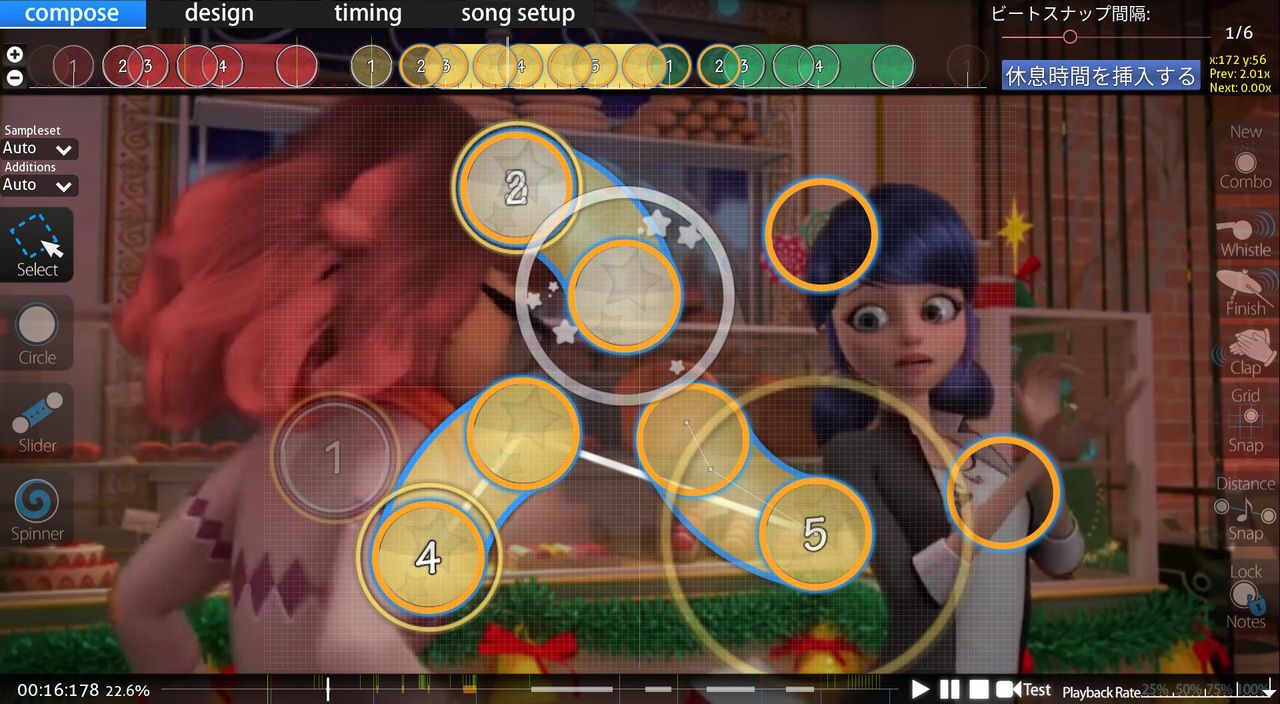
I use sliders that go up/down based on pitch, top/bottom of the playing field based on pitch, and movements that go up/down based on pitch.
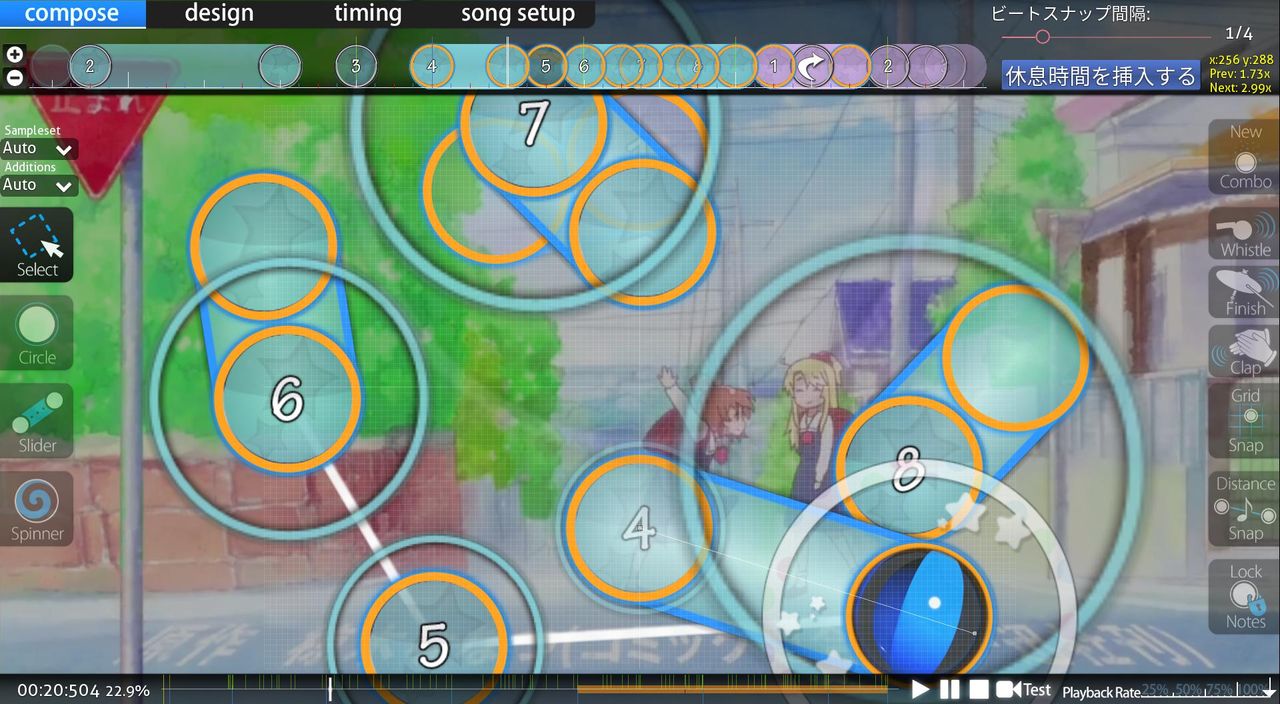
Similar to older maps, I introduce drastic changes between phrases of the song and ignore certain sounds to prioritize other layers of the music, such as vocals.
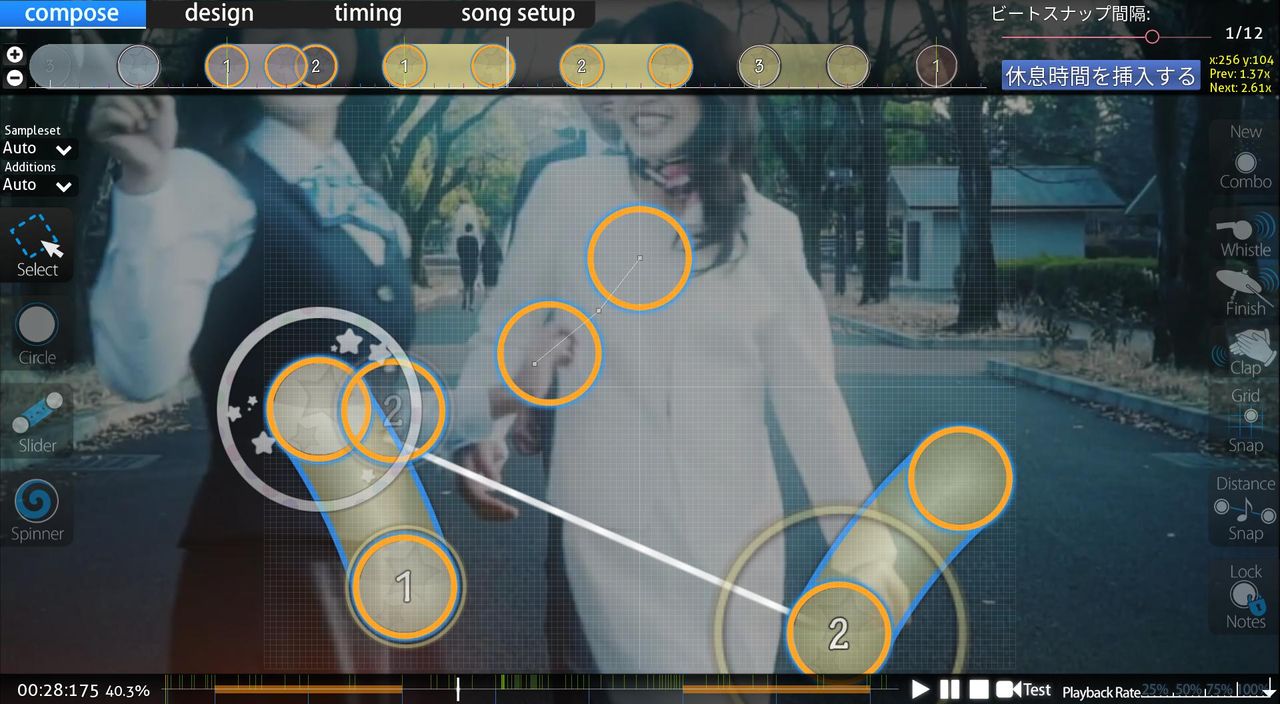
Unlike most symmetry mappers, I intentionally break symmetry when focusing on movement would produce better results. Similarly, I avoid common shapes and other structures when movement suffers.
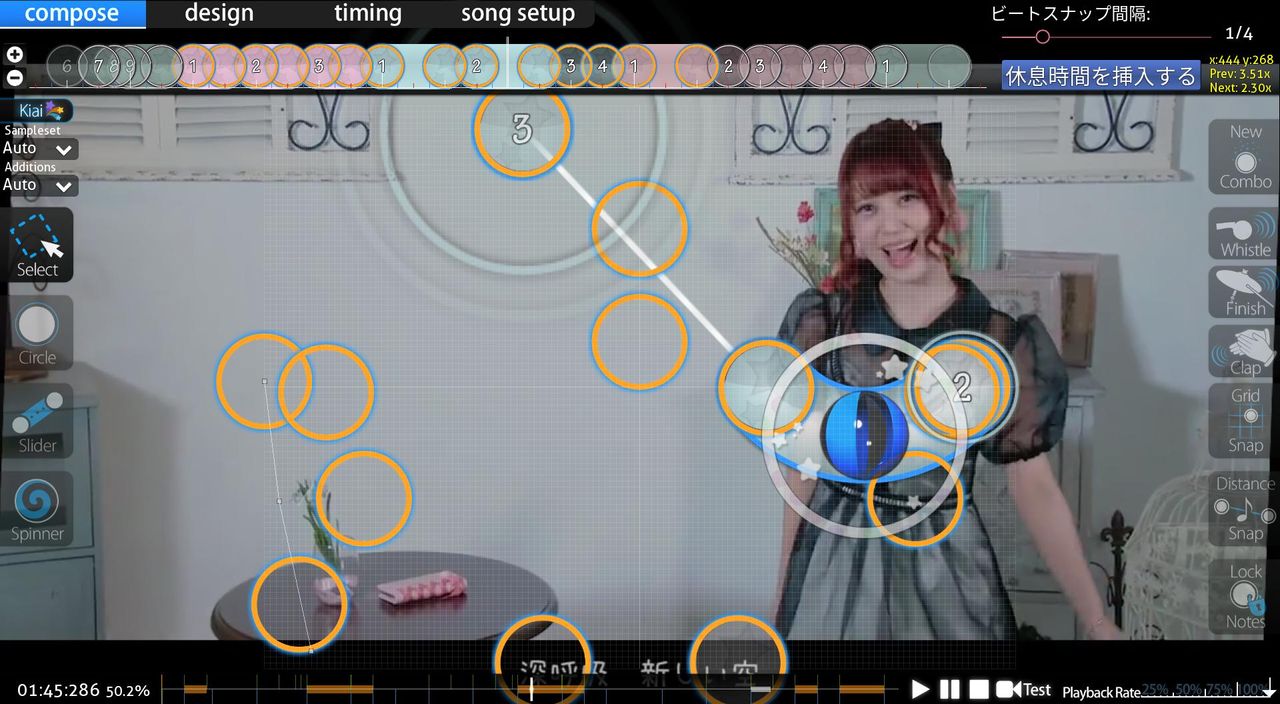
My high diffs tend to be more rough in nature to add personality to them. I focus on movement, weight, and aim style ambiguity while intentionally ignoring common mapping ideas in order to give my maps a certain feel and make mappers question what they know about mapping.
